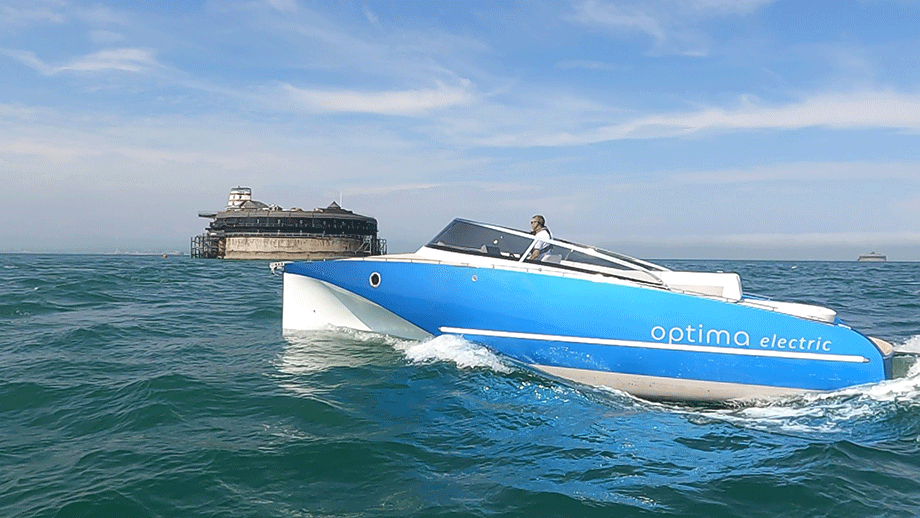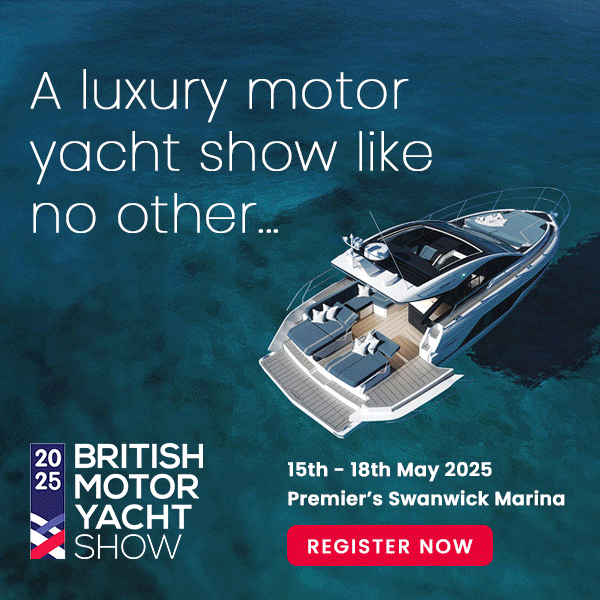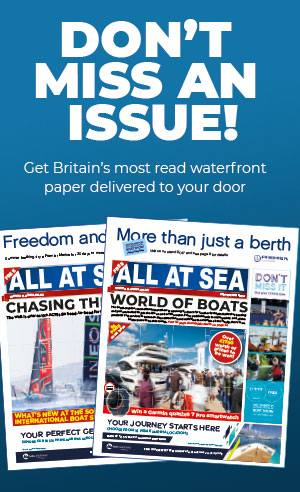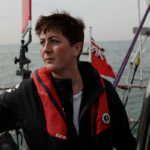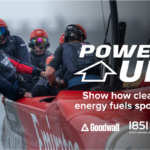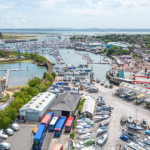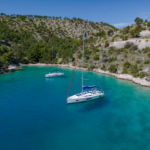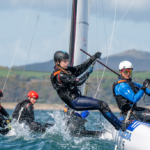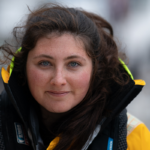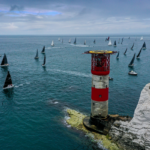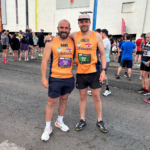On 12 June the Optima e10, 100 per cent electric boat, circumnavigated the Isle of Wight, becoming the first electric boat to make this 51nm passage.
Starting from Lymington, around the Needles, south of the Island and back through the Solent past Cowes, returning for a celebratory drink at The Haven in Lymington where the boat is based.
Optima’s CEO, David Kendall said, “It was an incredibly comfortable, relaxing and enjoyable trip – we were able to have lunch and engage in relaxing conversation on passage thanks to the good sea keeping of the innovative hull and noise reduction from the electric drive. We arrived back in Lymington as relaxed and refreshed as we started, despite some challenging conditions south of the island including thick fog and lively seas off St Catherine’s Point”.
The circumnavigation took just under six hours, starting and finishing at the Royal Lymington Yacht Club’s platform at the river entrance.
The e10 is a 100 per cent electric 10m boat, built in the Solent and was launched In April this year at the Green Tech Boat Show in Southampton. Not only is the vessel zero emission, but also uses significantly less energy than other boats. The entire passage used 73kWh of energy costing only £20 to recharge at the marina on a standard shore power supply. Very impressive for a 10m vessel weighing more than three tonnes.
The innovative, low resistance hull-form is best described as a “stabilised monohull” by designer David Kendall. It provides the efficiency and stability of a multi-hull within the confines of monohull and with significantly reduced energy consumption, makes electrification viable for longer passages. Thanks to this focus on energy efficiency, the Optima e10 is capable of a range of up to 150nm.
The e10 is powered by a single 40kW drive from RAD Propulsion and 120kWh of batteries from Kreisel Electric. Future boats will have twin steerable drives to give easy docking with joystick control.
Optima are currently developing larger models for both the leisure and commercial markets – to include a 44ft luxury cruiser with a choice of enclosed or open cockpits, water taxis for 12 – 16 passengers and a luxury holiday resort transfer vessel.
“We are currently in the transition from three years of R&D into production and commercialisation and are inviting discussions with investors and partners to accelerate this growth,” added David Kendall.









